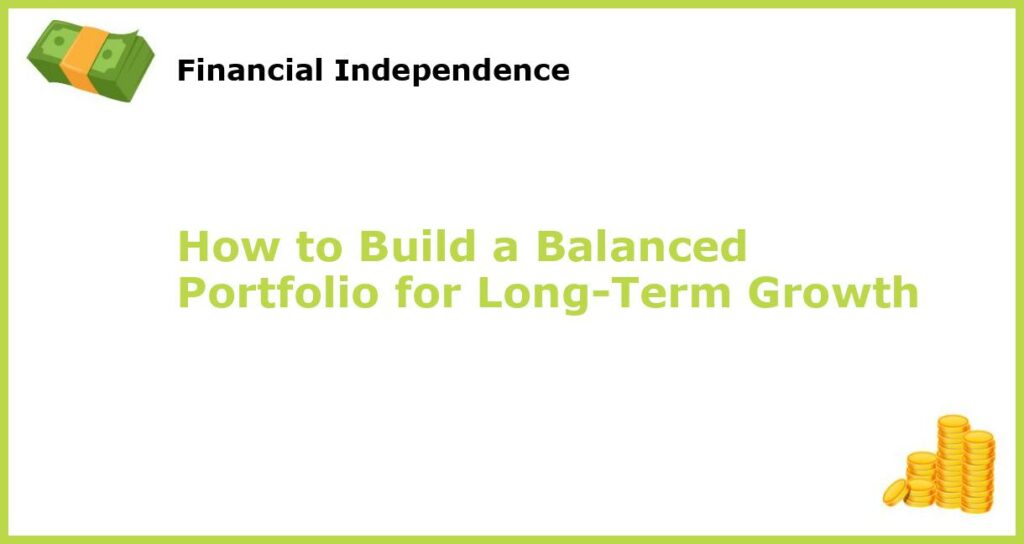Investing is a crucial step in building a strong financial future, but it can be challenging to know where to start or what to do. One of the essential elements of investing is developing a balanced investment portfolio that produces long-term growth. It isn’t easy to maintain a balanced investment portfolio for many years, especially as the global economic landscape changes, interest rates fluctuate, and inflation rates rise or fall. Therefore, every investor needs to understand the crucial factors that affect building a balanced investment portfolio.
Determining your Investment Goals and Risk Appetite

One critical factor in building a balanced investment portfolio is understanding your investment objectives and risk appetite. Your investment objectives should align with your financial goals and priorities, such as saving for a home, retirement or investing for your children’s education. On the other hand, your risk appetite is an essential consideration because it drives the kind of investments you can make, and it helps you stay committed to the investment for a long period.
By assessing your goals and risk appetite, you will be better prepared to make smarter investment decisions. For instance, if your risk appetite is low, you should consider investing in low-risk assets such as bonds or fixed deposits. If your risk appetite is high, you can consider investing in high-risk assets such as equities and cryptocurrencies.
Spreading your Investment

Many investors focus on a specific asset class when investing, such as only investing in stocks or bonds. However, this approach may not be practical since it increases the likelihood of weak returns due to market fluctuations. The wise approach is to spread your investments across different asset classes, such as equities, bonds, gold or commodities, among others. This diversification helps to reduce overall portfolio risk since the different asset classes perform differently under varying circumstances.
If one of the asset classes in your portfolio underperforms, other types of investments may compensate by performing better.
Invest in Low-Cost Funds

Investing in low-cost funds is another smart way of building a balanced portfolio while reducing fees and saving money. Low-cost index funds, exchange-traded funds (ETFs), and mutual funds typically have lower fees than actively managed funds, as there are fewer investment professionals involved. This can have a significant, positive impact on long-term investment returns. Therefore, carefully evaluate the fees involved in different investment options before selecting the right fit for you.
Consider Time Horizons

A long-term investment strategy is a fundamental element of building a balanced portfolio for long-term growth. Time horizons are crucial since they influence the decisions you make about investments. If you’re investing for a long period of time, for example, you may be able to handle more risky investments that require significant time for growth. Alternatively, a short-term investment strategy is ideal for specific financial goals that need to be met within a particular period.
It’s essential to evaluate your time horizon for your investments since short-term investments may not be suitable for long-term financial goals, and long-term investments may not be useful for short-term goals.
Rebalance Regularly

Over time, financial market movements may cause asset allocation changes affecting your overall investment goals. Regularly rebalancing ensures that you are investing in a balanced portfolio, getting the returns you expect, and reducing risk. Rebalancing requires trimming the overperforming positions and buying underperforming positions. This will help to ensure that your portfolio remains aligned with your long-term investment goals.
It’s essential to note that rebalancing is not a short-term solution to portfolio fluctuations, but it’s a long-term approach to maintaining a balanced investment portfolio.
Monitor your Investment

Monitoring your investment is a crucial element of building a balanced portfolio that produces long-term growth. You can use a personal investment dashboard, an investment tracking app or a financial advisor who can assist you in supervising your investments, track progress and make sensible changes to avoid failure. This allows you to identify the benefits and drawbacks of your investments as they happen, giving you an opportunity to adjust accordingly.
Monitoring your investment also helps to ensure that your investment plans remain on track with your long-term goals and your preferred asset allocation.
Don’t Be Emotional

Emotions should not drive investment decisions. It is crucial to make rational investment decisions based on historical trends, current market indicators, and future predictions. Your investment plans should be based on a thorough understanding of your investment goals and the asset types that align with those goals. Making impulsive or emotional investment decisions can have long-term negative implications that are difficult to correct.
In developing your investment plan, you should consider your risk tolerance, portfolio diversification, asset allocation and stay the course, remain patient, and avoid acting out of fear or excitement.
Review your portfolio and Cut Losses

While building a balanced investment portfolio, it’s vital to monitor the progress, review the portfolio regularly, and cut losses in underperforming investments. Sometimes, selling assets at a loss to rebalance your portfolio may be the best course of action to avoid further losses from the investment. This can be unsettling, stressed, but it’s a vital step to take towards building a balanced portfolio that promises long-term growth.
The decision to cut losses may be determined by many factors, such as market volatility, changes in trends or shifts in the industry, among others.
Don’t Time the Market
A common mistake among investors is about timing the market. Timing the market is a speculative, short-term investment tactic that carries a high level of risk. Technology has made it simple to analyse financial markets, spot growth rates, and make the right investment decisions. However, this practice can compromise your ability to build a balanced long-term portfolio of investments.
When it comes to market trends, they could either be beneficial or detrimental to your investment plan. Therefore, the wise approach is to focus on fundamental analysis and long-term investments rather than market timing or short-term speculation.
Consult a Financial Advisor
If you lack the knowledge or expertise for investment-building or require investment assistance, consult an experienced financial advisor. An advisor can help you develop a balanced investment strategy, assess your risk profile, and design a diversified portfolio. The advisor can then give you the perspective, guidance, and experience you need to make smarter investment decisions.
A financial advisor can offer investment advice, discuss investments that align with your objectives and risk appetites, and assist you in creating a long-term strategy to succeed in your investment objectives.







